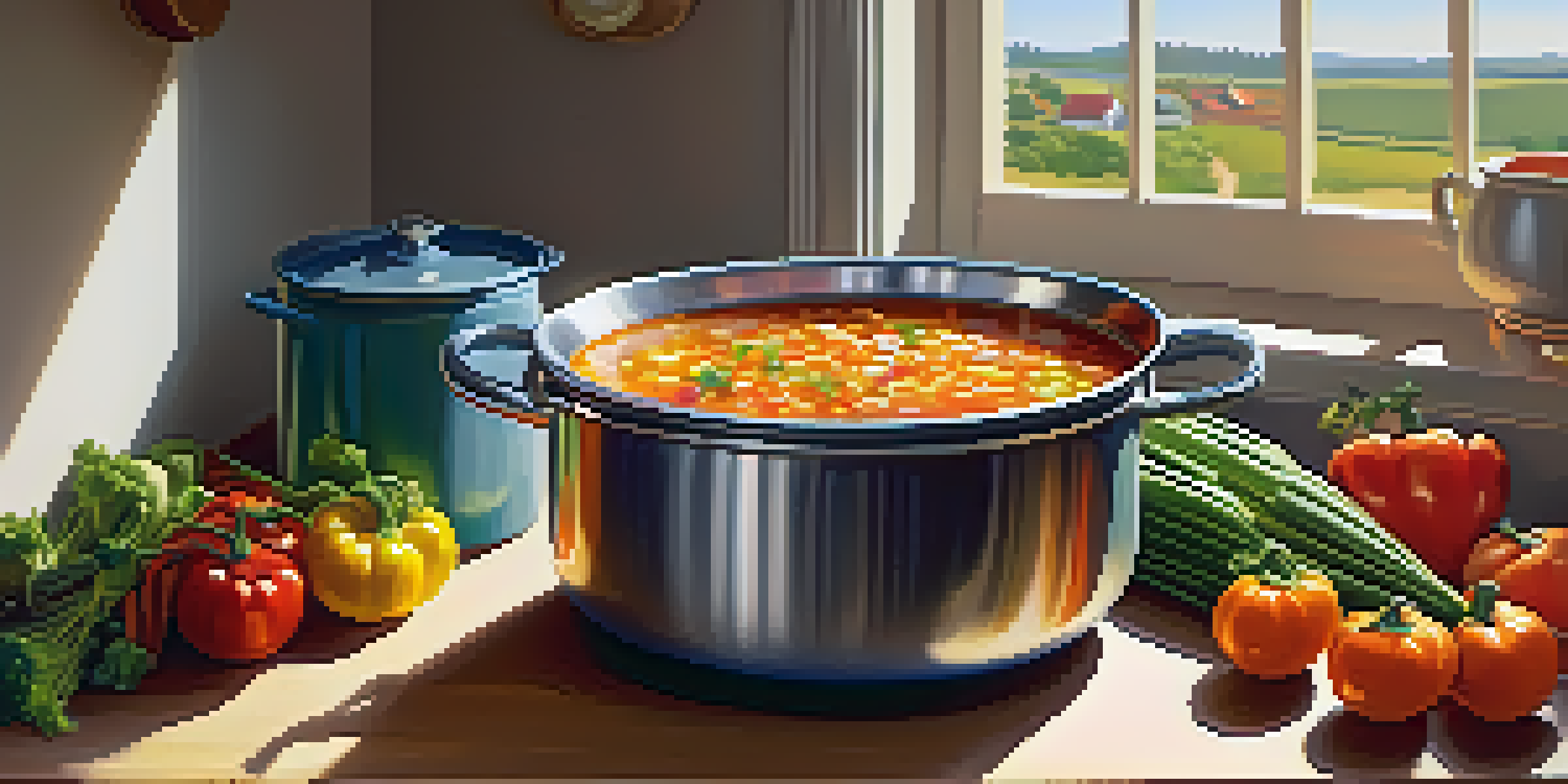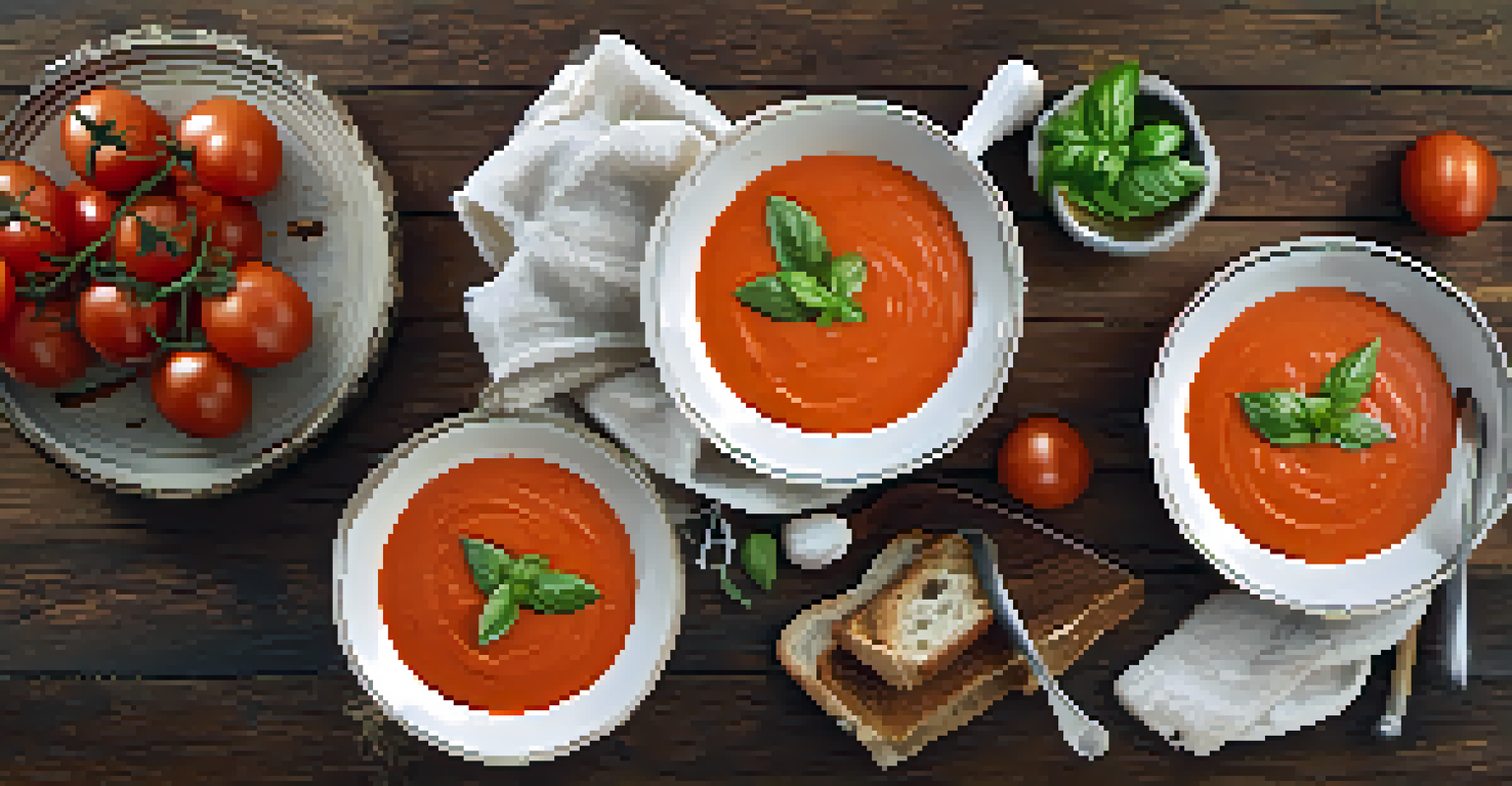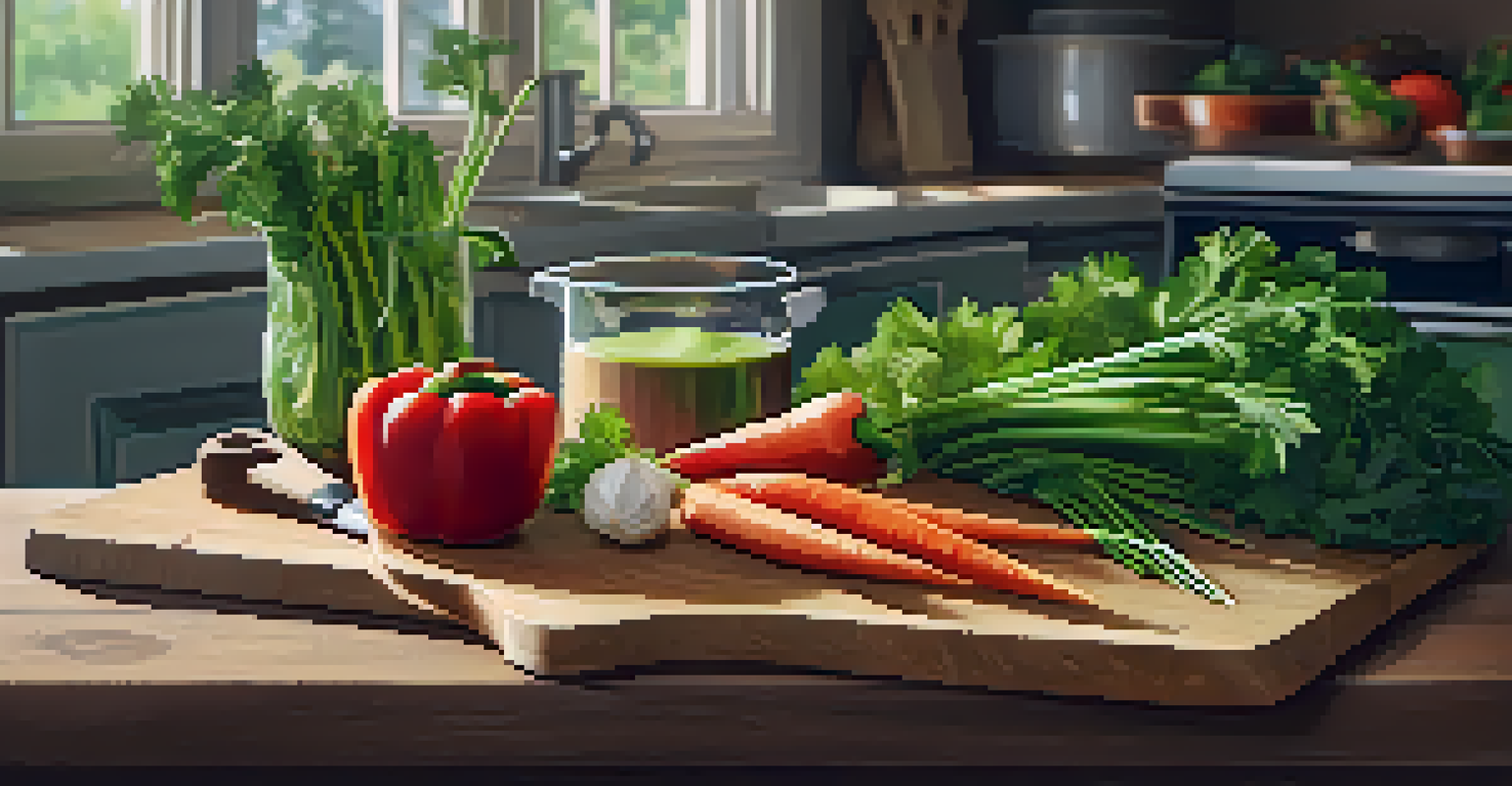How to Transform Leftover Vegetables into Delicious Soups

Why Soup is the Perfect Use for Leftover Vegetables
Soup is a fantastic way to utilize leftover vegetables that might otherwise go to waste. It not only helps reduce food waste but also creates a hearty meal in the process. Think of soup as a blank canvas where you can paint with flavors from various veggies.
Waste is a design flaw.
Leftover vegetables can add depth and character to your soup, transforming simple broth into something extraordinary. For instance, wilted greens can give your soup a fresh kick while roasted veggies can add a rich, caramelized flavor. Combining different textures and tastes can lead to delightful culinary surprises!
Additionally, making soup is an excellent way to experiment with flavors. You can mix and match ingredients based on what you have on hand, making each batch unique. Plus, it’s an easy way to incorporate healthy, nutrient-rich veggies into your diet.
Choosing the Right Base for Your Soup
The base of your soup is crucial as it sets the stage for the overall flavor. You can opt for a broth, stock, or even water, depending on what you have available. Vegetable broth is a great choice as it enhances the veggie flavors without overpowering them.

If you’re feeling adventurous, consider making your own broth using leftover vegetable scraps. Simmering onion skins, carrot tops, and celery leaves in water can yield a flavorful base that’s both economical and waste-reducing. This approach ensures you’re maximizing every part of your vegetables!
Transform Leftovers into Soup
Soup is a delicious way to use leftover vegetables while reducing food waste.
For a creamier option, you might choose to use coconut milk or a dairy product like cream or yogurt. These alternatives can give your soup a velvety texture and add richness to the overall dish.
Preparing Your Leftover Vegetables
Before you dive into cooking, it’s essential to prep your leftover vegetables properly. Start by washing and chopping them into uniform pieces to ensure even cooking. For tougher vegetables like carrots or potatoes, consider cutting them smaller since they take longer to soften.
Cooking with leftovers is like an art. It's about taking what you have and creating something beautiful.
Don’t forget about the flavor enhancers! Garlic, onions, and herbs can elevate your soup to the next level. Sautéing these ingredients first can release their essential oils and create a fragrant base that makes your soup even more inviting.
If you have a mix of soft and hard vegetables, add them to the pot at different times. This way, the softer ones don’t overcook while the harder ones are still becoming tender. This technique will help maintain a pleasant texture throughout your soup.
Incorporating Spices and Seasonings
Spices and seasonings play a vital role in bringing your soup to life. A pinch of salt and pepper is just the beginning; feel free to get creative! Consider spices like cumin, paprika, or even a dash of cayenne for some heat, depending on your taste preferences.
Herbs can also make a significant impact on the final flavor. Fresh herbs such as parsley, thyme, or basil can brighten up your soup, while dried herbs offer a concentrated flavor. Just remember, dried herbs are more potent, so use them sparingly.
Choose the Right Soup Base
Selecting the appropriate base, like broth or stock, enhances the overall flavor of your soup.
Taste as you go! This is crucial when it comes to seasoning. Start with small amounts and gradually add more, ensuring you don’t overpower your soup. Balancing flavors will lead to an enjoyable and satisfying dish.
Blending Your Soup for a Creamy Texture
For those who love a creamy soup, blending is an excellent technique to achieve that texture. Once your soup has cooked and the vegetables are tender, you can use an immersion blender or transfer it to a regular blender in batches. Just be cautious with hot liquids!
Blending not only creates a smooth consistency but also helps to combine the flavors more thoroughly. If you prefer a chunky texture, you can blend only a portion of the soup and leave the rest as is. This way, you get the best of both worlds!
If you want to add extra creaminess without blending, consider adding a dollop of yogurt or cream just before serving. This addition can enhance the soup’s richness and create an inviting presentation.
Garnishing Your Soup for Presentation
Garnishing is the finishing touch that can elevate your soup from good to great. Simple garnishes like a sprinkle of fresh herbs, a drizzle of olive oil, or a dollop of sour cream can add visual appeal and additional flavor. It’s all about making your dish look as delicious as it tastes!
You can also get creative with textures by adding crunchy toppings like croutons, toasted seeds, or nuts. These elements can introduce a delightful contrast to the smoothness of the soup and make the eating experience more enjoyable.
Enhance Flavor with Seasonings
Using spices, herbs, and proper seasoning techniques can elevate your soup to a whole new level.
Remember, presentation matters! Consider serving your soup in stylish bowls or with a side of crusty bread. This attention to detail can make a simple meal feel special, inviting everyone to dig in.
Storing Leftover Soup for Future Enjoyment
If you’ve made a large batch of soup, storing leftovers properly is key to enjoying them later. Allow the soup to cool completely before transferring it to airtight containers. This helps prevent condensation from forming, which can dilute the flavors.
Soups can be stored in the refrigerator for up to three days or frozen for several months. If freezing, consider portioning your soup into smaller containers for easy reheating. Just be sure to leave some space at the top of the container, as liquids expand when frozen.

Reheating your soup can be quick and easy—just warm it gently on the stove or in the microwave. Adding a splash of water or broth can help revive its consistency if it thickens during storage. Enjoying that homemade goodness again will remind you of the delicious meal you created!